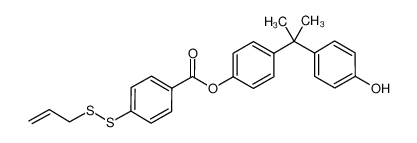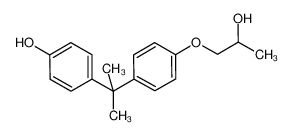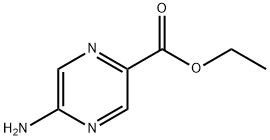Hello, I’m wondering—are Chinese plastic food storage bags safe for daily use, especially when storing hot or oily foods? Could these bags release chemicals like BPA or phthalates, and if so, what’s the potential impact on hormone levels or long-term health? How can I choose safer alternatives?
Are Chinese Plastic Food Storage Bags Safe for Long-Term Use or Hot Foods?
Related Encyclopedia
- 31535-91-8
- C24H15N5
- 373.40900
- All (0)
- China (0)
- (0)

- 26914-52-3
- C9H15NO2S
- 201.29
- All (0)
- China (0)
- (0)

- 63148-62-9
- C6H18OSi2
- 162.38
- All (49)
- China (38)
- (49)

- 1166842-02-9
- C35H32O4S4
- 644.88600
- All (0)
- China (0)
- (0)

- 1166842-04-1
- C25H24O3S2
- 436.58600
- All (0)
- China (0)
- (0)
- 1159992-72-9
- C63H86N8O9S
- 1131.47000
- All (0)
- China (0)
- (0)

- 1227615-20-4
- C33H28O8
- 552.57100
- All (0)
- China (0)
- (0)

- 57372-69-7
- C18H22O3
- 286.36500
- All (0)
- China (0)
- (0)
- 210979-67-2
- C24H34O5
- 402.52400
- All (0)
- China (0)
- (0)
- 0
- All (0)
- China (0)
- (0)
Related Products More >
-
- 9016-00-6
- CNY Request For Quotation
-
- 9016-00-6
- CNY Request For Quotation
-
- 25085-99-8
- USD 490.0000
- 240kg
-
- 9035-69-2
- USD 30.0000
- 1kg
-
- 63449-39-8
- USD 1000.0000
- 1200kg
-
- 63148-62-9
- Request For Quotation
- 1kg
-
- 63148-62-9
- Request For Quotation
- 1ton


 沪ICP备2021018848号-5
沪ICP备2021018848号-5


Plastic bags used for storing food can release plasticizers like phthalates or bisphenol A (BPA), especially under heat, sunlight, or acidic/oily conditions. These compounds are known endocrine disruptors, meaning they can mimic or interfere with the body’s hormonal systems. For example, BPA can bind to estrogen receptors and may alter reproductive hormone levels, while certain phthalates can affect testosterone production and liver enzymes.
In long-term or high-exposure scenarios, this hormonal disruption has been linked to clinical outcomes such as reproductive disorders, early puberty, thyroid issues, and potentially increased cancer risk, particularly breast or prostate cancers. In children or pregnant individuals, where hormonal balance is especially critical, exposure should be minimized.
Unfortunately, some manufacturers—particularly those operating outside stringent regulatory systems—may use recycled plastics or include unauthorized additives to reduce costs. These products often lack proper food safety certification (like FDA, EU, or GB/T standards in China). Without clear labeling or third-party verification, it can be difficult for consumers to identify which bags are truly food-safe.
To reduce risk, look for products labeled “食品接触用” (“for food contact use”) and check for certifications like QS mark (China) or FDA-compliant. Avoid using plastic bags for hot food, microwaving, or oily/acidic contents unless the bag specifically states it is heat-safe. Reusable alternatives like silicone pouches, glass containers, or PEVA bags are better for long-term food storage and environmental health.
If patients experience unexplained hormonal changes, liver issues, or are managing hormone-sensitive conditions, it’s wise to review everyday exposure sources—including kitchen plastics—as a potential contributor. Routine avoidance of suspect plastics can be a simple yet effective preventive health measure.
A common myth is that all products from a single country are either safe or unsafe. That’s not true—China makes plenty of high-quality, certified food storage bags, just as other countries produce some questionable ones. Another mistake is ignoring labels: people grab any bag without checking for food-grade symbols or safety certifications (like FDA approval or EU standards), which are good signs of quality. And some reuse bags meant for single use, stretching them thin or exposing them to more heat, which increases the risk of chemicals seeping into food.
For everyday use, here’s how to stay safe. First, check the packaging. Look for clear labels indicating they’re “food contact safe” or “BPA-free” (BPA is a chemical some plastics use that can be harmful). Certifications from global bodies (like FDA, LFGB, or SGS) are a good reassurance—they mean the product passed safety tests.
Avoid using any plastic bag, regardless of origin, for hot foods or microwaving. Heat makes plastics more likely to release chemicals, so let leftovers cool before storing. Also, steer clear of using thin, flimsy bags for oily or acidic foods—they’re more prone to breaking down. Opt for thicker bags or containers for those items.
If you’re unsure about a bag’s safety, do a simple test: smell it. A strong chemical or plastic odor is a red flag—good food-grade bags should have little to no smell. And stick to single use unless the bag is labeled “reusable.” Washing and reusing flimsy bags can weaken them, making them less protective.
For extra peace of mind, consider alternatives like silicone bags or glass containers for storing food, especially for long periods. But if you prefer plastic, focusing on labeled, certified products—whether from China or elsewhere—matters more than the country of origin.
At the end of the day, it’s about being a savvy shopper: check labels, avoid heat, and trust your senses. With a little attention, you can use plastic storage bags safely, no matter where they’re made.
Think of it like buying a water bottle: You’d never drink from a bottle made of sketchy, recycled plastic that smells weird, right? Same goes for food storage bags! Some cheap plastic bags (especially those black or brightly colored ones from street vendors) are made from recycled materials or contain additives like dyes and plasticizers. These chemicals can seep into your food, especially when heated or exposed to oils—just like how ink bleeds through a wet newspaper.
Here’s the science: Food-grade plastics (like PE, PP, or PET) are engineered to be stable and non-reactive. They’re tested to withstand certain temperatures and resist chemical breakdown. But non-food-grade plastics (like PVC or those with recycled content) might contain harmful substances like lead, cadmium, or phthalates. When heated (e.g., microwaving leftovers in a non-microwave-safe bag) or filled with fatty foods (like fried chicken or salad dressings), these chemicals can dissolve into your meal—yikes!
So, how to stay safe?
Check the label: Look for “食品用” (food-use) or “QS” certification (China’s food safety mark). If it’s a clear, odorless bag with no colorful prints, you’re probably good.
Avoid the “no-no” list: Never use thin, flimsy bags (like those from supermarkets for veggies) for hot foods, oily dishes, or acidic items (like vinegar-based marinades). They’re not designed to handle those conditions!
Upgrade your storage: For leftovers, use reusable silicone bags or glass containers. They’re eco-friendly and won’t leach chemicals, even if you reheat them.
Pro tip: If you’re unsure, do the “sniff test”—if the bag smells like chemicals or plastic, toss it! And remember, even food-grade bags have limits. Don’t microwave them unless they’re explicitly labeled “microwave-safe,” and avoid reusing them too many times (they can get scratched, which traps bacteria).
Bottom line: China makes plenty of safe food storage bags, but you’ve got to be picky! Stick to labeled, food-grade options, and when in doubt, go for glass or silicone. Your gut (and your food) will thank you! ?✨
However, the potential concern lies not in the polymer backbone itself, but in the additives that may be mixed into the plastic during manufacturing. To improve flexibility, durability, or clarity, manufacturers may add plasticizers (like phthalates), stabilizers, or colorants. Some of these additives—particularly in cheaper or non-food-grade plastics—are not covalently bonded to the polymer matrix, meaning they can migrate out of the plastic under certain conditions, such as heat, acidity, or fat content in food.
From a chemistry standpoint, this migration can occur due to weak Van der Waals forces holding the additive in place. If a plastic bag is exposed to hot food, microwave radiation, or acidic sauces, the increased molecular motion and solubility can cause these small, often lipophilic molecules to leach into the food. Once ingested, compounds like Bisphenol A (BPA) or certain phthalates can interact with biological systems by mimicking hormones like estrogen—a concept rooted in molecular shape recognition and receptor-ligand binding in biochemistry.
Biologically, the concern is that even small concentrations of these hormone-mimicking molecules, through chronic exposure, may affect the endocrine system. This is especially relevant for children or pregnant individuals, where hormone levels tightly regulate development and organ function.
In daily life, it’s important to distinguish between plastics labeled "food-safe" and those not intended for contact with consumables. Certified food-grade plastics are tested to ensure minimal migration of harmful substances under specified conditions. In contrast, plastics made from recycled or mixed materials might contain residual contaminants or unauthorized additives.